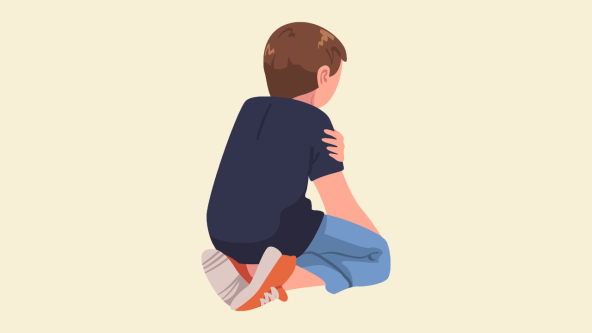Anxiety and emotionally based school avoidance

Anxiety is a feeling of stress, fear, or panic which can affect a person’s life in both physical and psychological ways. It is an evolutionary mechanism to help us adapt when we feel unsafe, like a useful alarm bell and it helps us find out what we are afraid of, recognise a danger, and tell us that action is needed. Initially, anxiety may lead to freezing, intense focus, and physiological changes: the body releases adrenalin, breathing changes, and blood is channelled to muscles for ‘flight or fight’. Dangers which cause anxiety may be real (eg a physical danger like fear of needles), social (eg speaking up in front of the class), or imaginary (eg triggered by a memory of past trauma, such as witnessing a car accident).
Emotionally Based School Avoidance (EBSA)
Causes of anxiety are very individual but in severe cases, children’s emotional well-being will be impacted and they develop Emotionally Based School Avoidance (EBSA) which affects their attendance, academic attainment, confidence, and friendships and can lead to mental health issues in other areas of life, such as self-harm.
It [EBSA] is no longer seen simply as school refusal, which suggests a child is choosing to be anxious.
EBSA occurs when a child has significant difficulty attending school due to emotional factors. It can be sporadic, affecting a child with relatively good school attendance by creating physical symptoms (eg butterflies before a P.E. lesson); or long-term, leading to a child failing to access school altogether. Both are accompanied by high levels of anxiety. It is no longer seen simply as school refusal, which suggests a child is choosing to be anxious.
EBSA affects 1-2 per cent of the school population of primary and secondary age and across all socio-economic levels, girls and boys in equal numbers. It can have a sudden onset or be a gradual experience but is rarely due to a single factor.
Causes of anxiety
Anxiety about school impacts learning, so recognising and breaking the cycle that supports it is key. Negative thoughts about school might be caused by specific subjects (eg games lessons) or might be part of a larger condition (eg anxiety as part of autism). Transition to a new school at year 7 is a common time in triggering EBSA as well as family change (eg divorce). Children with a family history of EBSA are known to repeat the behaviours themselves. Other risk factors include attachment disorder and bullying. The resulting stress leads to a child avoiding participation in school, either with physical symptoms (eg tummy ache), or psychological (eg selective mutism).
Push and Pull cycle
Many elements decrease the ‘push’ towards participation at school and exacerbate a poor school experience, which in turn risks further complications for academic attainment and mental health. Conversely, by staying home, a child may increase time with a favourite family member and participate in enjoyable activities (eg gaming on the iPad), which in turn increases the ‘pull’ towards home. As the non-attendance develops, so the push and pull factors diminish and grow respectively.
Treatment for EBSA
What can be done to break the cycle and alleviate EBSA?
School-based mental health support
PHSE curriculum to cover subjects such as eating disorder, bullying, gender and race discrimination
School readiness and transition to new school support
Family liaison with a family-link officer
Building up a child’s resilience characteristics – eg by developing social skills, hobbies, and interests outside school
Establishing a relationship with a trusted teacher or adult.
Further advice on EBSA from Support Services for Education.
Our experienced consultants can help with educational advice, from navigating specialist support and finding a school for your child.
Featured in: Directory of needs
Tags: Mental Health EHCP Autism Exams



